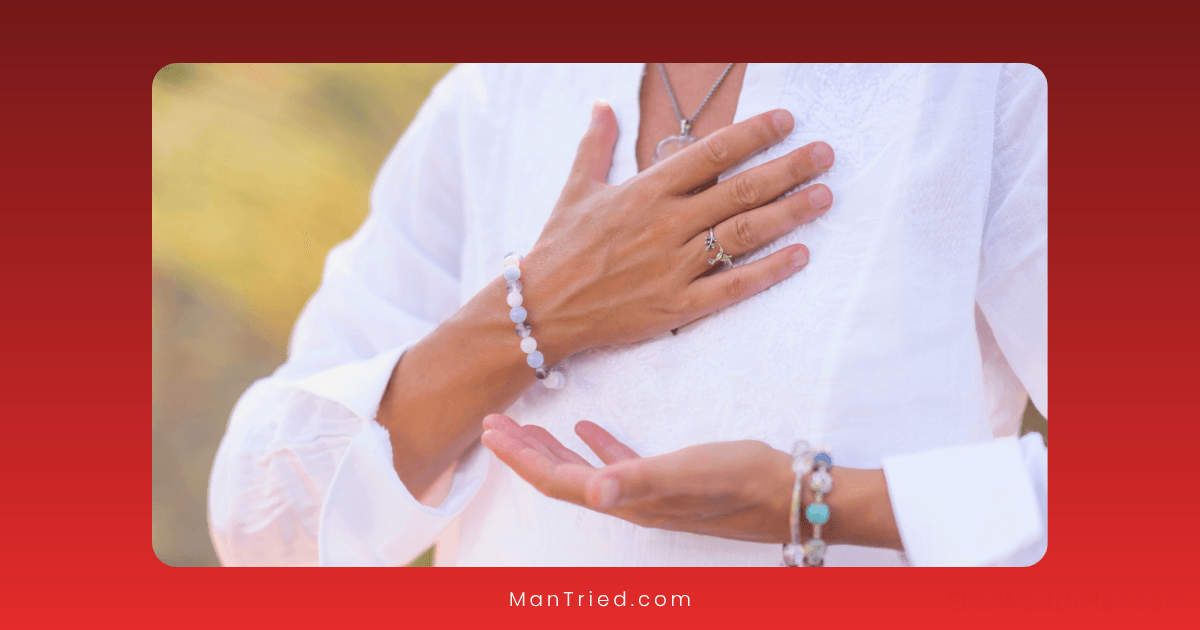Body Acceptance Practices Specifically for Men

Let’s be honest—men aren’t exactly encouraged to talk about body image. Between the “dad bod” jokes and the superhero physiques dominating our screens, there’s an unspoken message that men should either look perfect or just not care. But the reality? Men are struggling silently with body image more than ever before.
According to a recent survey, 48% of men aged 16-40 report struggling with their physical appearance, while only 26% express satisfaction with how they look. These aren’t just numbers—they represent real men experiencing real pain about their bodies.
As someone who has worked with men on body image issues for over a decade, I’ve seen firsthand how different the journey to body acceptance can be for men compared to women. This guide offers practical, male-specific approaches to developing a healthier relationship with your body—no unrealistic standards, no shame, just honest strategies that work.
Understanding the Unique Landscape of Male Body Image
Before diving into practices, it’s important to understand what makes men’s body image issues distinct:
The Muscle Paradox
Unlike women, who often face pressure primarily around thinness, men experience what researchers call “the double bind”—simultaneous pressure to be both lean and muscular. This creates a physically contradictory ideal that’s nearly impossible to achieve naturally.
As Very Well Mind reports, approximately 25% of male adolescents are concerned about their bodies and desire more toned and defined muscles. This focus on muscularity can lead to unhealthy behaviors like overtraining and even steroid use.
The Silence Factor
Men are less likely to discuss body insecurities openly. A study from Beyond Healing Counseling found that many men experience intense internal conflict about their bodies but rarely vocalize these concerns due to fear of appearing weak or unmasculine.
This silence creates isolation, making men feel like they’re the only ones struggling—when in reality, nearly half of men are dissatisfied with their bodies.
The Invisibility in Body Positivity
The body positivity movement has primarily focused on women, leaving men without clear models for what male body acceptance looks like. As Northwest Pharmacy points out, “The body positivity movement supports the idea of loving the body you’re in, but has largely excluded men.”
This gap means men often lack the language, community, and frameworks to address body image concerns in healthy ways.
Body Acceptance Practices Tailored for Men
With these unique challenges in mind, here are evidence-based practices specifically designed to help men develop greater body acceptance:
1. Functional Appreciation
The Practice: Rather than focusing on how your body looks, shift attention to what your body can do.
How to Do It:
- Keep a “body function gratitude” log for one week, noting three things your body allowed you to do each day
- After workouts, focus on performance gains (strength, endurance, skill) rather than appearance changes
- Set goals based on function (being able to hike with friends without getting winded) rather than aesthetics
Why It Works for Men: This approach aligns with research from Better Health Victoria showing that men who focus on body functionality rather than appearance report higher body satisfaction. It also works with, rather than against, traditionally masculine values of strength and capability.
2. Media Literacy Training
The Practice: Develop awareness of how media images are manipulated and unrealistic.
How to Do It:
- Follow social media accounts that show diverse male bodies
- Watch documentaries like “Bigger, Stronger, Faster” that expose the reality behind idealized male physiques
- Practice the “photoshop mental filter”—when seeing idealized images, mentally acknowledge “This has been edited, lit perfectly, and may involve performance-enhancing substances”
Why It Works for Men: According to McLean Hospital, media literacy is particularly effective for men because many are unaware of how extensively male bodies in media are enhanced, both digitally and through performance-enhancing substances.
3. Competitive Reframing
The Practice: Channel competitive instincts toward body acceptance rather than comparison.
How to Do It:
- Challenge yourself to catch and redirect negative self-talk (keeping score if that motivates you)
- Set “personal records” for days without body checking or negative self-talk
- Create accountability partnerships with other men where you check in on body acceptance goals
Why It Works for Men: This approach uses traditionally masculine traits like competitiveness and goal-setting as tools for growth rather than sources of shame. Research from Unstuck Therapy suggests that framing self-care as achievement can increase men’s engagement with these practices.
4. Physical Embodiment Practices
The Practice: Engage in physical activities that promote body awareness without appearance focus.
How to Do It:
- Try martial arts, which emphasize body awareness, control, and respect
- Engage in strength training with a focus on the mind-muscle connection rather than appearance
- Practice body scan meditations specifically designed for men (several apps now offer these)
Why It Works for Men: These practices provide concrete, active approaches to body connection that many men find more accessible than abstract concepts like “loving your body.” They also build body awareness, which Men’s Health Clinic identifies as a key component of male body acceptance.
5. Language Restructuring
The Practice: Consciously change how you talk about your body and other men’s bodies.
How to Do It:
- Eliminate “should” statements about your body (“I should have bigger arms”)
- Replace appearance-based compliments to other men with skill or character-based ones
- Practice neutral body descriptions rather than judgmental ones (“I have a 34-inch waist” rather than “I’m too fat”)
Why It Works for Men: Research from Chapters Health shows that language patterns significantly impact body image. Men often use particularly harsh, judgmental language about their bodies, making this practice especially powerful.
6. Mentor Connection
The Practice: Seek out older male mentors who demonstrate healthy body acceptance.
How to Do It:
- Join men’s groups that include members of various ages and body types
- Identify men in your community who seem comfortable in their bodies and build relationships with them
- Read memoirs or interviews with men who have navigated body image challenges
Why It Works for Men: This approach provides concrete models for male body acceptance across the lifespan. According to Positive Psychology, men respond particularly well to modeling and mentorship in developing new psychological skills.
7. Strength-Based Identity Expansion
The Practice: Develop a more complex self-concept that reduces the importance of appearance.
How to Do It:
- Identify and regularly engage with five aspects of your identity unrelated to appearance
- Practice the “core qualities” exercise: list five character strengths that define you more fundamentally than your appearance
- Create a “values hierarchy” where you consciously rank what matters most in your life
Why It Works for Men: This practice addresses what therapists call “over-identification with the body,” which Beyond Healing Counseling identifies as particularly common in men with body image concerns.
Special Considerations for Different Groups of Men
Body acceptance isn’t one-size-fits-all, even among men. Here are some considerations for specific groups:
For Men in Middle Age and Beyond
- Focus on health markers (energy, mobility, strength) rather than appearance
- Practice gratitude for the life experiences that have shaped your body
- Seek out representations of older men who embody confidence regardless of physical changes
For LGBTQ+ Men
- Recognize the heightened body pressures in some LGBTQ+ communities
- Connect with LGBTQ+-specific body acceptance resources and communities
- Practice separating your value as a person from community-specific beauty standards
For Men from Diverse Cultural Backgrounds
- Acknowledge how cultural expectations around male bodies may differ from mainstream Western ideals
- Explore how your cultural background can be a source of body acceptance wisdom
- Connect with men from similar backgrounds who model healthy body relationships
When to Seek Professional Support
While these practices can be powerful, sometimes professional support is needed. Consider seeking help if:
- Body concerns are significantly impacting your daily life or mood
- You’re engaging in potentially harmful behaviors like extreme dieting, overexercising, or steroid use
- You experience body dysmorphia (a persistent, distressing preoccupation with perceived flaws)
As Beyond Healing Counseling notes, Cognitive Behavioral Therapy (CBT) is particularly effective for addressing distorted thoughts about appearance in men.
The Bigger Picture: Redefining Masculinity
Body acceptance for men isn’t just about feeling better about your appearance—it’s part of a larger shift toward a healthier, more compassionate form of masculinity.
When men develop greater body acceptance, they:
- Model healthier attitudes for younger generations
- Create space for other men to be more authentic
- Free up mental and emotional resources for more meaningful pursuits
- Build resilience against aging and physical changes
- Develop deeper, more authentic relationships
As one client put it: “When I stopped obsessing about my ‘dad bod,’ I actually became a better dad. I had more energy to play with my kids instead of worrying about how I looked playing with my kids.”
Starting Your Journey
Body acceptance isn’t achieved overnight—it’s a practice and a process. Start small:
- Choose one practice from this guide that resonates with you
- Commit to trying it consistently for two weeks
- Notice any shifts in how you think and feel about your body
- Add another practice when you’re ready
Remember that setbacks are normal. The goal isn’t perfection—it’s a gradually improving relationship with the body that carries you through life.
As more men embrace body acceptance, we collectively create a culture where all bodies are respected, appreciated, and allowed to exist without judgment or shame. And that’s something worth working toward, one practice at a time.
Have you struggled with body image as a man? What practices have helped you develop greater acceptance? Share your experiences in the comments below.






